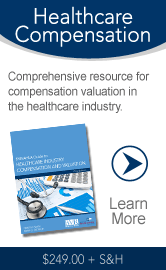 |
 |
Issue #24-1 | June 5, 2014

Where hospitals should focus to build value Hospital systems that invest in improving efficiency, information technology, and outpatient services will be the ones best positioned to survive the new healthcare landscape, says Moody's Investors Service in a report, Building Value: Investments Aimed at New Priorities Create Opportunities for Not-for-Profit Hospitals. Out is in: Inpatient utilization is decreasing for several reasons. There are tough new HHS and CMS rules that crack down on inpatient treatments. Also, there is new competition from drug stores and unaffiliated outpatient centers as consumers become more sensitive to price. To offset the revenue losses, many hospital systems are investing in newer outpatient venues, such as ambulatory surgery centers, urgent care centers, and stand-alone emergency departments. Many organizations are also seeking to boost value through the acquisition and implementation of comprehensive and expensive IT systems. The return on these investments can be elusive, while the cost can immediately weaken both income statements and balance sheets, says Moody's.
Quality-of-care metrics determine pay for medical directors Medical directors' scope of responsibilities and duties continue to evolve to incorporate quality measures. According to the MGMA Medical Directorship Compensation Survey: 2014 Report Based on 2013 Data, 44% of responding medical directors reported that their duties were tied to quality metrics, including patient satisfaction, quality of care, and patient safety. More than 75% reported their duties were specifically tied to patient satisfaction and quality-of-care metrics, and more than 35% reported ties to patient safety metrics. Medical directors also reported that their duties were tied to other quality metrics, such as CMS core measures, compliance, patient readmissions, and staff and provider satisfaction. What to do: Involve those who will be affected by the new system in the plan’s design. A recent case study of a team-based compensation system tied to quality of care reveals that more than half of the participants suffered a decline in job satisfaction. Reasons: They felt they had no control over their compensation plan, which they thought was too complex. P4P analyzed in new white paper Many provider networks have shifted or are in the process of shifting to a proactive, population-based care model. Health plans are paying providers based on the measured risk of their population or the quality of care they are rendering. Although the ultimate goal of all stakeholders is to improve care while reducing costs, there has been resistance by both providers and health plans to change. Data needed: A new white paper from Arcadia Healthcare Solutions examines the core structure of pay-for-performance programs and the different payment models that currently exist that are supporting this concept. It makes the point that both health plans and providers must have clear visibility into the shared risk and reward, as well as the measurable impact that quality initiatives are having on their patient/member populations. The paper states: “A trusted, high-quality, and objective data asset that accurately captures and reflects the health of patient populations and the quality of care rendered is the foundation for success under these new payment models.”
Value in new wave of data Now that individuals have enrolled for healthcare coverage under the Affordable Care Act, healthcare providers are seeing a “tsunami of data” as new patients come through the doors. This could lead to a “tipping point for healthcare where all clinical decisions become data-driven—setting the foundation for advances in analytics, population health management, telemedicine and care coordination, all while improving patient outcomes and hopefully lowering costs,” according to a report in the HIMSSwire. Impact on payers: "These new data streams will form a significant input into the analytics that we will crunch through," says Andy Crowne, general manager of healthcare solutions in EMC's Information Intelligence Group. "There's a need for such data driven processes in order to achieve a consistent set of outcomes that can then be optimized through changes in process. And it is not a great leap to where payers drive business to providers who offer the best combination of outcome and price." PwC: M&A deal volume steady; value up In the first quarter of 2014, the total volume of healthcare industry deals remained consistent with the same period in 2013. However, the value of announced deals rose 152% to $12.3 billion, reveals the Q1 2014 US Health Services Deal Insights from PwC. Optimistic outlook: Larger deal sizes may represent a renewed confidence as the dust settles from the implementation of the ACA's insurance exchanges, says the report. “Our outlook for hospital deal activity in 2014 remains optimistic as the impetus for greater alignment and size remains unchanged.” From a sector perspective, acute care hospitals and physician practices had reduced M&A activity. Hospital deal activity may be experiencing a short-term slowdown as buyers and sellers digest some of the large-scale deals announced in 2013 (such as Tenet Healthcare and Community Health Systems). In the physician practice sector, physician practice management companies were the sole source of buyers for the nine announced deals as they seek volume to counteract lower reimbursement environments. The long-term care sector continued to lead both volume and value metrics for the quarter. Conversely, the home health, behavioral health, and rehabilitation sectors lagged with 11 total deals announced in the quarter—down from 18 total deals for the same period in 2013. In the managed care sector, deal volume ticked up from two announced deals in the first quarter of 2013 to five announced deals in the first quarter of 2014. Deal value was not disclosed for the 2014 deals. For private equity, the volume of deals with traditional provider or payer targets remained sluggish in the first quarter of 2014 as investors focus on niche markets and services. “Financial buyers may be facing headwinds in the form of tighter lending standards and also may face rising prices for target companies as strategic buyers compete for the same opportunities,” the report states. “However, private equity interest in international healthcare investments has emerged as a recent positive trend.” False Claims Act cases recently unsealedThe primary tool in fighting fraud against government programs is the False Claims Act. Most cases are initiated by whistle-blowers, who get a reward of around 20% of what the government recovers. Also, the largest percentage of cases deals with healthcare fraud. Since March, the government has unsealed 58 cases filed under the act’s whistle-blower provision, according to a report in the National Law Review, which analysed the cases and reveals these findings:
Webinars of interest BVR is conducting an Online Symposium on Healthcare Valuation, which focuses on the challenges inherent in valuations in medicine, life sciences, and healthcare. Here are some upcoming webinars in this series:
|
|
||||||
Business Valuation Resources, LLC
1000 SW Broadway, Suite 1200, Portland, OR 97205
(503) 291-7963 | editor@bvhealthcarenews.com
bvresources.com/healthcare

